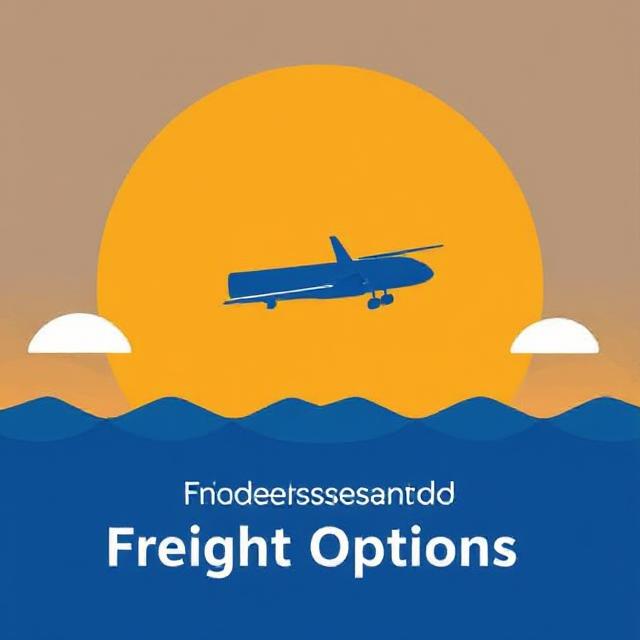Explore the key differences between land, air, and sea freight. Learn when to use each shipping method based on cost, speed, cargo type, and destination.
Understanding Freight Options: When to Ship by Land, Sky, or Sea
Freight transportation is the backbone of global trade. With goods moving across countries and continents daily, businesses must choose the most efficient and cost-effective shipping method. The big question is: when should you ship by land, sky, or sea?
This guide unpacks the core differences between the main freight options—road, rail, air, and sea—to help you make smarter logistics decisions.
🚚 Shipping by Land (Road & Rail Freight)
Land freight includes both road and rail transport and is ideal for domestic or cross-border regional logistics.
📦 Road Freight
When to use:
- Short to medium distances
- Door-to-door delivery
- Flexible routing required
Best for:
- E-commerce
- Perishable or time-sensitive goods
- Smaller loads
Pros:
- High flexibility
- Ideal for rural and urban access
- Widely available
Cons:
- Affected by road conditions and traffic
- Less efficient for long-haul or large-volume freight
🚆 Rail Freight
When to use:
- Long-distance inland routes
- Heavy or bulk shipments
- Cost-sensitive transport needs
Best for:
- Industrial goods
- Construction materials
- Large volumes
Pros:
- Cheaper over long distances
- Energy-efficient
- Handles high-capacity loads
Cons:
- Limited to rail infrastructure
- Requires road transport for final delivery
✈️ Shipping by Air (Sky Freight)
Air freight is the fastest shipping option, perfect for time-critical or high-value items.
When to use:
- Urgent or emergency shipments
- International delivery within days
- Small or lightweight cargo
Best for:
- Electronics
- Pharmaceuticals
- Luxury goods
Pros:
- Fastest transit times
- High security and reliability
- Global reach
Cons:
- High cost
- Weight and size limitations
- Not ideal for bulky or low-value items
🚢 Shipping by Sea (Ocean Freight)
Sea freight is the most economical method for international, large-volume cargo.
When to use:
- International shipments with flexible timelines
- Heavy, bulky, or hazardous goods
- Cost-sensitive logistics
Best for:
- Machinery
- Raw materials
- Furniture and vehicles
Pros:
- Low cost per unit
- Can carry massive loads
- Suitable for almost all cargo types
Cons:
- Slow transit
- Possible customs and port delays
- Requires multimodal logistics inland
🧭 How to Choose the Right Freight Option
| Mode | Speed | Cost | Capacity | Best For |
|---|---|---|---|---|
| Road | Medium | $$ | Small–Medium | Local & regional delivery |
| Rail | Medium | $ | High | Domestic bulk transport |
| Air | Fastest | $$$$ | Low | Urgent, high-value cargo |
| Sea | Slow | $ | Very High | Global, heavy cargo |
🚀 Final Thoughts
There’s no universal “best” method of freight transportation—it all depends on what you’re shipping, where it’s going, how fast it needs to get there, and your budget. Whether you choose land, sky, or sea, aligning your shipping strategy with your business goals ensures smooth logistics operations and happy customers.
Target Keywords:
- freight shipping options
- land vs air vs sea freight
- cargo transport methods
- when to ship by air
- best shipping method
- air freight vs sea freight
- road vs rail freight
- global logistics shipping
- freight transport explained

